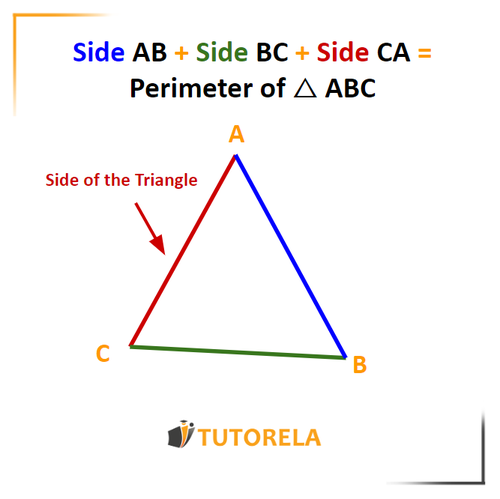The sides of a triangle
Every triangle has three sides. That also works the other way around - if we see a shape with tree sides, it's a triangle.
types of triangles based on the sides:
The sides allow us to classify the different types of triangles according to their size:
- Equilateral: All sides are equal, leading to equal angles.
- Isosceles: Two sides are equal, with base angles also equal.
- Scalene: All sides are different lengths, with all angles unique.
Perimeter of a Triangle
Like every polygon, the sides of a triangle form its perimeter. To find the perimeter of a triangle, simply add the lengths of all three sides.

Relation between the sides and the angles in a triangle
In a triangle, there’s a direct relationship between the length of a side and the size of the angle across from it:
The Longer Side will always be in the opposite side of the larger Angle, and the shorter side will always be in the opposite side of the smaller Angle.
Can every three lines form a triangle?
In any triangle, the sum of the two shorter sides must always be greater than the length of the third side. This rule, known as the Triangle Inequality Theorem, ensures that the sides can actually form a closed triangle. For example, if the two shorter sides are not greater than the third, the sides would lie flat rather than forming a triangle. This principle is crucial in determining whether a set of side lengths can create a valid triangle.